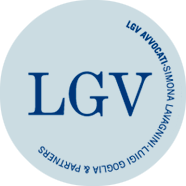In 2015 the German company Wajos GmbH applied for registration of a trademark for a particular shape of bottle, characterized by different sizes between the top and bottom of the same. The EUIPO Board of Appeal found that the shape was similar to that of a common amphora, which was already widespread on the food market, and stated that it was impossible for an average consumer to distinguish the products of Wajos from those of other companies. Furthermore, the Board considered that such a shape would meet functional requirements, since the enlargement of the upper part would allow the bottle to be placed on a support which would otherwise be difficult. According to EUIPO, for goods for which the trademark has been applied for, the relevant public would be the general consumer of food products, with a medium level of attention; such a circumstance would prevent consumers from identifying the shape of the bottle as particularly distinctive and indicative of the origin of the product. Therefore, as the trademark does not have distinctive character, it would not be eligible for registration under Article 7(1)(b) of EU Regulation 2017/1001.
In the motion against the decision of the EUIPO Commission, the company Wajos first contested a similar identification of the target audience, arguing instead that this was made up of a small circle of consumers, lovers of fine, quality food products and available from selected retailers. Such a clientele must therefore be considered more than wise and certainly able to appreciate the particularity of that specific bottle compared to other bottles on the market.
Regarding the distinctive character of the brand, Wajos supported its presence by emphasizing the non-purely functional character of the bottle configuration, clearly distinguishing it from the other forms of packaging on the market, to which the relevant public is accustomed.The European General Court firstly held that distinctive character must be assessed, on the one hand, in relation to the goods and services for which registration is sought and, on the other, in relation to the perception of the relevant public. With respect to the relevant public, the Court also identified the relevant consumer as an average consumer, on average attentive, since the list of products for which registration has been requested includes, to a large extent, consumer products in the food sector.
However, the EGC held that the average consumer was perfectly capable of perceiving and appreciating the shape of the packaging of the goods as an indication of their commercial origin, provided that the characteristics of that shape were such as to attract his attention. To that end, it is necessary to analyze the overall impression created by the shape. Where a trade mark is made up of a combination of elements – the Court maintains – the combination may have distinctive character even if the individual elements, taken individually, do not.
The Court therefore held that the combination of the elements of the Wajos bottle creates a shape that can be memorized by the relevant public, being significantly different from the other bottles on the food market. Moreover, contrary to what the EUIPO Board of Appeal has stated, the shape of the bottle in question differs from classic amphoras in that the latter are not made of glass. Finally, the enlargement of the upper part of the bottle, regardless of technical and functional reasons, can bring an aesthetic value to the trademark applied for. The European Judges therefore annulled the decision of the Board of Appeal of EUIPO, considering that while it is true that the average consumer generally does not pay attention to the shape of food products and does not associate their shape with the indication of commercial origin, in the present case the exceptional nature of the product’s packaging is, on the contrary, capable of indicating the commercial origin of the products.


